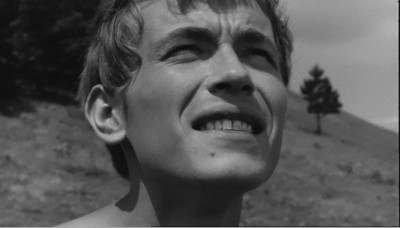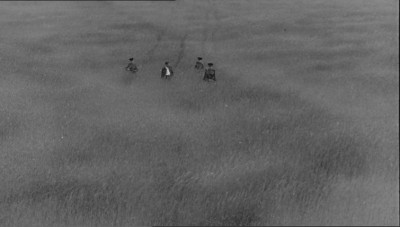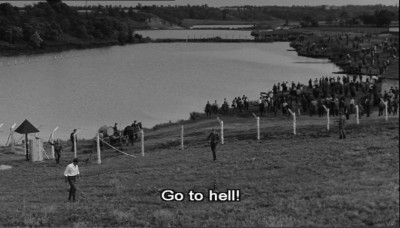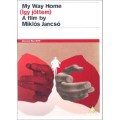| Reviews & Columns |
|
Reviews DVD TV on DVD Blu-ray 4K UHD International DVDs In Theaters Reviews by Studio Video Games Features Collector Series DVDs Easter Egg Database Interviews DVD Talk Radio Feature Articles Columns Anime Talk DVD Savant Horror DVDs The M.O.D. Squad Art House HD Talk Silent DVD
|
DVD Talk Forum |
|
|
| Resources |
|
DVD Price Search Customer Service #'s RCE Info Links |
|
Columns
|
|
|
My Way Home

Jóska is detained by partisans, freed, caught by Cossack cavalry, released, caught again, briefly interned, released, caught again, and then detailed as a forced laborer to a solitary Russian soldier tending a herd of dairy cows. Kolya (Sergei Nikonyenko), the Russian soldier, is a boy not much older than Jóska. The pair share no language in common and communicate initially through pantomime. A friendship of sorts develops between the boys, but even this dynamic is unstable, and in time Jóska is again on his way.

Completed in 1965, My Way Home was the third film by Hungarian director Miklós Jancsó. Regarded as Jancsó's first critically important work, it was followed in quick succession by three other international acclaimed successes: The Round-Up (Szegénylegények) in 1966, and in 1967 The Red and the White (Csillagosok, katonák) and Silence and Cry (Csend és kiáltás). Already in My Way Home, directorial choices that would become signature stylings emulated by other acclaimed filmmakers were evident: namely, the frequent use of very long takes, scenes choreographed specifically for tracking shots, minimal dialogue, emphasis on the external physical environment and away from the internal psychological motivations of the characters, and a theme of the vulnerability of individuals to oppression.

Presentation
My Way Home has been released from the UK-based boutique DVD label Second Run on a single dual-layered DVD which is PAL-encoded but not region restricted.
Video:
My Way Home is presented in an anamorphic 1.78:1 aspect ratio. The black and white image looks quite good with fine detail. Despite some speckles of minor print damage, the image is otherwise very clean.
Audio:
The monaural audio seems to be mixed very softly, but once adjusted sounds clean without hiss or distortion. Optional English subtitles are provided for the Hungarian and Russian audio track.
Extras:
The disc includes a fifty-minute made-for-TV documentary from Jancsó's four-part Message of Stones (1994) series offering a meditative consideration of Jewish-Hungarian history through decrepit synagogues and cemeteries. Also included is a booklet with an essay by Penelope Houston reprinted from the Summer, 1969 edition of Sight & Sound.
Final Thoughts:
My Way Home stands on its own as a fine example of observational cinema, but it's even better as a gateway into the many fine works of legendary Hungarian director Miklós Jancsó. While being perhaps more accessible to a general audience than the films that immediately followed, My Way Home also offers insight into a directorial style still in its gestation.
|
| Popular Reviews |
| Sponsored Links |
|
|
| Sponsored Links |
|
|
| Release List | Reviews | Shop | Newsletter | Forum | DVD Giveaways | Blu-Ray | Advertise |
|
Copyright 2024 DVDTalk.com All Rights Reserved. Legal Info, Privacy Policy, Terms of Use,
Manage Preferences,
Your Privacy Choices | |||||||













